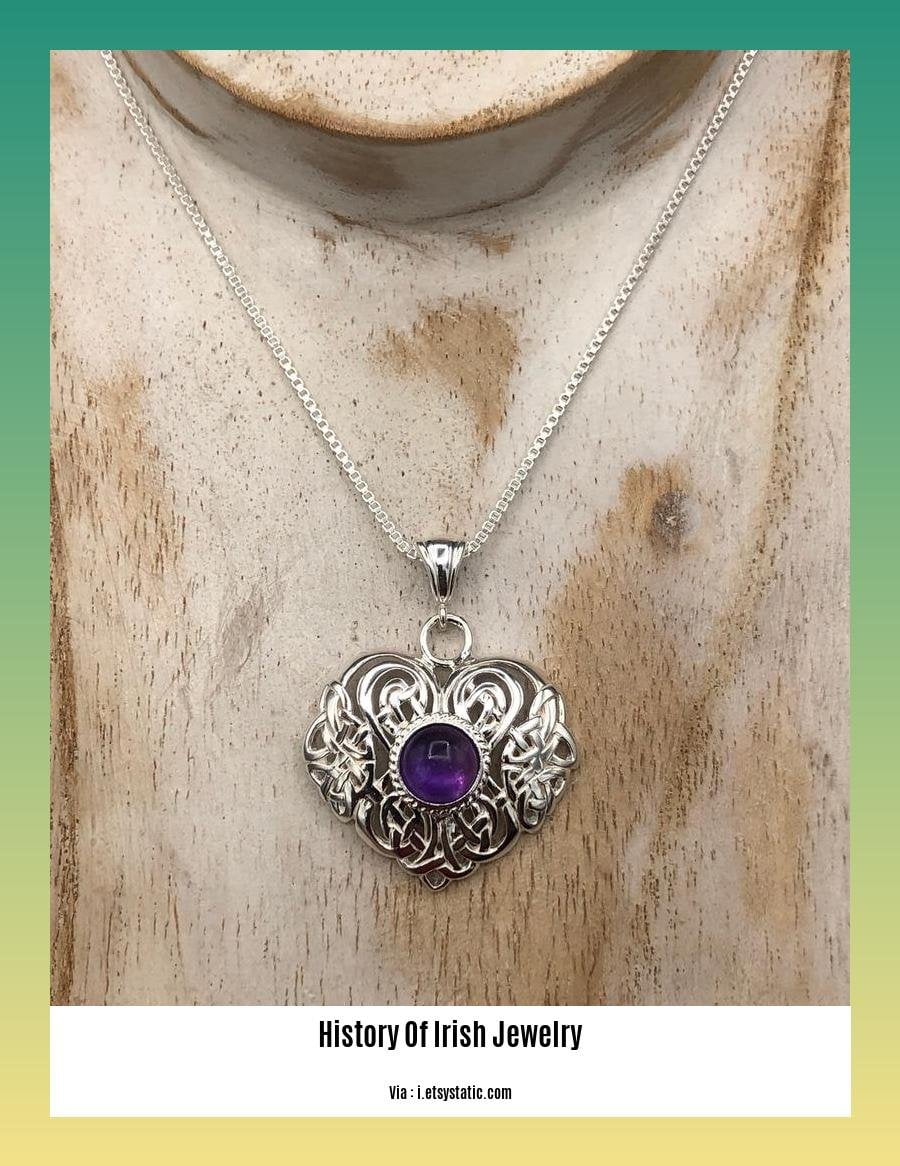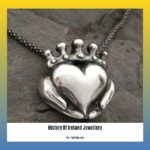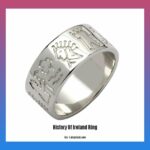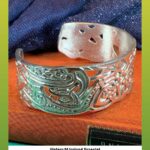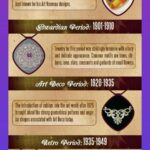Embark on a captivating adventure through time as we delve into the rich history of Irish jewelry, a testament to the country’s cultural heritage and artistic prowess. From the ancient origins of Celtic designs to the elegance of Georgian and Victorian eras, discover the stories and symbolism embedded in these exquisite pieces that have adorned Irish people for centuries. Join us on this journey to uncover the allure and significance of Irish jewelry, a true embodiment of Ireland’s vibrant past.
Key Takeaways:
Celtic Crosses: Introduced with Christianity by St. Patrick, these symbolize Irish heritage and Christian beliefs.
Claddagh Jewelry: Originating from Galway in the 17th century, this represents Celtic romance.
Trinity Knot: An ancient Celtic symbol, signifying eternity with no beginning or end.
Ogham Script: An early Gaelic script predating St. Patrick, carved on stone monuments in Ireland.
History of Irish Jewelry
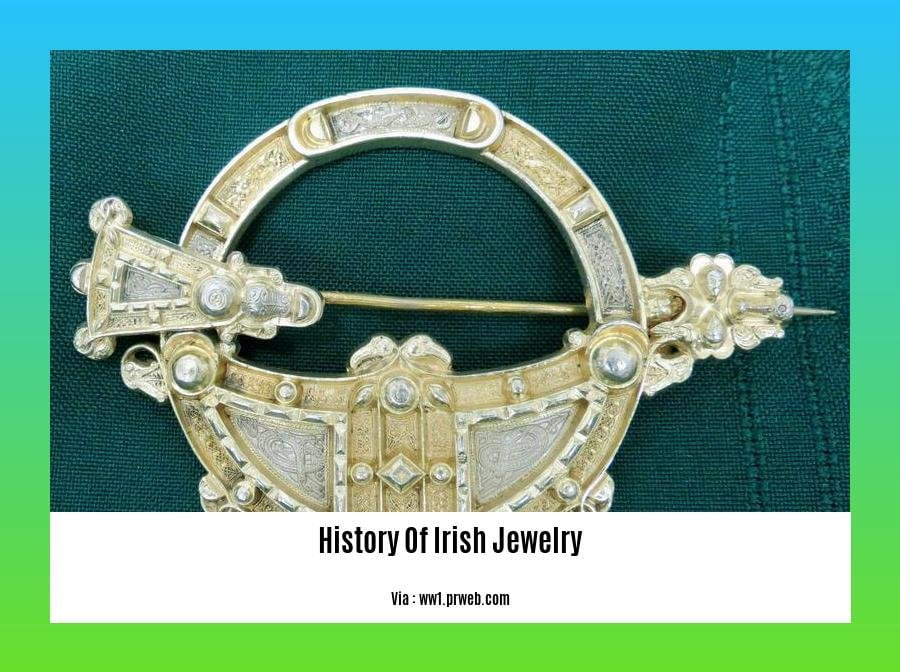
Irish jewelry, a true testament to the nation’s rich cultural tapestry, has captured the hearts of people for centuries. Its intricate designs and profound symbolism tell stories of love, faith, and heritage, inviting us to embark on a captivating journey through time.
Celtic Crosses: A Fusion of Christianity and Celtic Heritage
With the arrival of Christianity in Ireland, the iconic Celtic cross emerged, symbolizing the deep fusion of Irish heritage and Christian beliefs. These crosses, often crafted with intricate knots and patterns, served as powerful symbols of devotion, representing the country’s unique blend of spirituality and artistry.
Claddagh Rings: A Symbol of Celtic Romance
From the charming town of Galway, the Claddagh ring emerged in the 17th century, embodying the essence of Celtic romance. Featuring two hands clasping a heart, topped with a crown, this enchanting ring symbolized love, loyalty, and friendship. Its enduring popularity speaks volumes about the timeless appeal of Irish jewelry’s romantic traditions.
Trinity Knot: An Emblem of Eternity and Interconnectedness
Deeply rooted in ancient Celtic symbolism, the Trinity knot has captivated hearts with its intricate design. This elegant motif, representing eternity with no beginning or end, reminds us of the interconnectedness of all things, serving as a powerful symbol of unity and the enduring spirit of Ireland.
Ogham Script: The Ancient Language of Ireland
Predating the arrival of St. Patrick, the Ogham script held a significant place in Irish history. Carved onto stone monuments across the country, this early Gaelic script tells stories of ancient Ireland, offering a glimpse into the rich linguistic heritage that has shaped the nation’s cultural identity.
Irish jewelry is more than just a collection of beautiful objects; it is a tangible link to Ireland’s past, a reflection of its cultural essence, and a reminder of the enduring spirit of the Irish people. Each piece tells a story, inviting us to delve into the depths of Irish history and appreciate the artistry that has shaped this captivating art form.
Curious about the evolution of traditional Irish attire throughout the ages? Dive into the history of Irish clothing and discover the fascinating story behind the iconic garments that have shaped Irish fashion and identity.
Step into the captivating world of Irish dance and uncover the history of Irish step dance. Immerse yourself in the vibrant narrative of this revered tradition, tracing its origins, influences, and the remarkable journey that has made it an integral part of Irish culture.
Evolution Through the Ages: Examining how Irish jewelry has evolved over time, adapting to changing styles and influences from various cultures.
Irish jewelry, adorned with intricate designs and symbolism, embarks on a captivating journey through the annals of time. Witness how this art form morphs, mirroring Ireland’s rich tapestry of cultural influences.
Celtic Origins: A Timeless Legacy
In the Bronze Age, Irish jewelry takes a Celtic turn, showcasing torcs and spirals, emblems of Celtic artistry. These iconic pieces, meticulously crafted by skilled artisans, bear witness to a time when ancient traditions flourished.
Early Christian Influence: A Sacred Transformation
Christianity’s arrival in Ireland kindled a sacred flame, inspiring the creation of Celtic crosses, symbolic of the fusion between Celtic heritage and the new faith. These crosses, adorned with elaborate knots and patterns, graced the Irish landscape, serving as testaments of devotion and artistry.
Viking Inroads: A Nordic Touch
When the Vikings arrived on Ireland’s shores, they brought with them their unique artistic flair, infusing Irish jewelry with a Nordic influence. Striking animal motifs and intricate filigree work, inspired by Viking designs, lent a fresh perspective to Irish craftsmanship.
Georgian Elegance: A Touch of Refinement
The Georgian era ushered in an era of elegance, characterized by delicate gold and silver pieces, often adorned with gemstones. This period marked a shift towards a more refined aesthetic, reflecting the changing tastes and fashions of the time.
Celtic Revival: Reclaiming a Heritage
The 19th century witnessed a resurgence of Celtic pride, fueling a revival of traditional Irish jewelry designs. This revival drew inspiration from ancient Celtic motifs, breathing new life into traditional techniques and symbols, fostering a renewed appreciation for Ireland’s rich cultural heritage.
Modern Interpretations: A Contemporary Twist
In contemporary times, Irish jewelry continues to evolve, embracing modern trends while honoring traditional craftsmanship. Designers blend traditional motifs with innovative materials and techniques, creating pieces that resonate with both history and the present day.
Key Takeaways:
- Irish jewelry’s evolution mirrors Ireland’s cultural journey, influenced by various eras and traditions.
- Celtic, Christian, Viking, and Georgian influences have all left their mark on this art form.
- The Celtic Revival rekindled pride in Irish heritage, leading to a resurgence of traditional designs.
- Modern Irish jewelry blends traditional motifs with contemporary styles, appealing to a global audience.
[Sources]
– Irish Culture and Traditions
– Irish Shop
Iconic Symbolism and Meanings: Unraveling the symbolism behind popular Irish jewelry motifs, such as the Claddagh ring and the Trinity knot.
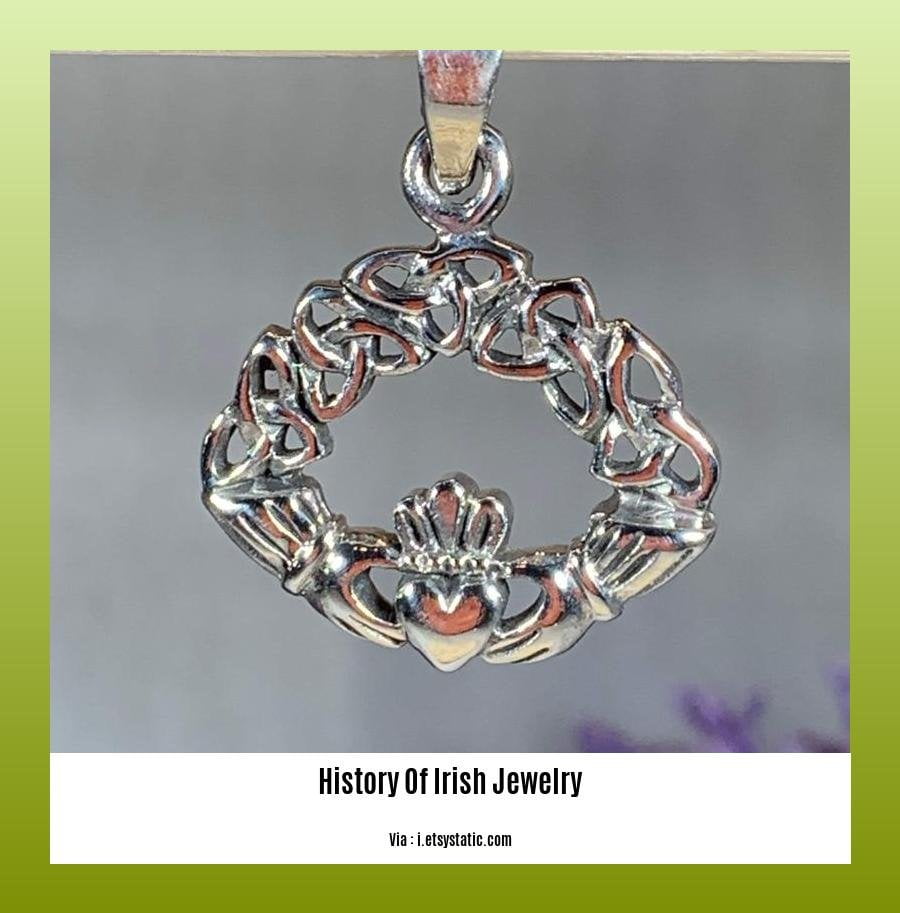
In our journey through the rich tapestry of Irish jewelry, it’s impossible to ignore the captivating allure of its iconic motifs.
Each piece, carefully crafted and steeped in centuries of tradition, holds a treasure trove of symbolism, whispering tales of love, loyalty, and the enduring spirit of the Irish people.
Let’s delve into the stories behind two of the most beloved Irish jewelry motifs – the Claddagh ring and the Trinity knot – and unravel the profound meanings they hold.
The Claddagh Ring: A Timeless Symbol of Love and Friendship
Imagine a ring, its delicate form adorned with a heart, a crown, and two hands. This is the Claddagh ring, an emblem of love, loyalty, and friendship that has captured hearts for centuries.
Emerging from the fishing village of Claddagh in Galway, Ireland, in the early 17th century, the Claddagh ring holds a special place in Irish culture.
Each element of the ring holds a deep meaning:
– The heart, a universal symbol of love, represents the emotional bond between two people.
– The crown, a symbol of loyalty and fidelity, signifies the wearer’s commitment to the relationship.
– The two hands, a symbol of friendship and support, represent the strength and unity of the bond between the wearer and the recipient.
The positioning of the ring on the hand also holds significance:
– Worn on the right hand with the heart facing outward, it signals that the wearer is single and open to love.
– Worn on the right hand with the heart facing inward, it indicates that the wearer is in a relationship.
– Worn on the left hand with the heart facing outward, it signifies that the wearer is engaged or married.
The Claddagh ring, with its timeless symbolism and enduring charm, has become an iconic representation of Irish love and friendship, a tangible expression of the deep and meaningful connections that bind people together.
The Trinity Knot: An Enduring Symbol of Eternity and Interconnectedness
In the realm of Irish jewelry, the Trinity knot stands as a symbol of eternity, interconnectedness, and the enduring power of faith.
This intricate design, woven from three interlocking loops, has its roots deep in Celtic heritage and has become synonymous with Irish culture.
The Trinity knot’s three loops, seamlessly interwoven, represent the Father, the Son, and the Holy Spirit, symbolizing the interconnectedness of the Holy Trinity in Christian belief.
Beyond its religious symbolism, the Trinity knot also represents the interconnectedness of all things in the universe, a reminder of the unity and harmony that binds us all.
Its endless, unbroken design symbolizes eternity, the continuous cycle of life, death, and rebirth, and the enduring nature of love and friendship.
The Trinity knot, with its graceful curves and profound symbolism, has become an iconic motif in Irish jewelry, a timeless expression of faith, eternity, and the interconnectedness of all living things.
Key Takeaways:
- The Claddagh ring, with its heart, crown, and hands motifs, symbolizes love, loyalty, and friendship.
- The positioning of the Claddagh ring on the hand indicates the wearer’s relationship status.
- The Trinity knot’s three interlocking loops represent the Father, the Son, and the Holy Spirit, symbolizing the interconnectedness of the Holy Trinity.
- The Trinity knot also represents the interconnectedness of all things in the universe and the endless cycle of life, death, and rebirth.
References:
- Irish Jewelry: A Timeless Tradition
- The Meaning of the Trinity Knot
Contemporary Designs and Revivals: Showcasing the resurgence of Irish jewelry in modern times, with contemporary designers reinterpreting traditional motifs.
In the ever-evolving world of fashion and accessories, Irish jewelry has carved a unique niche for itself. Contemporary Irish jewelry designers are breathing new life into traditional Celtic motifs, creating pieces that resonate with the modern aesthetic while honoring the rich cultural heritage of Ireland.
These designers are not afraid to experiment with unconventional materials, blending precious metals with gemstones, leather, and even wood to create one-of-a-kind pieces. They draw inspiration from nature, history, and Irish folklore, translating these elements into contemporary designs that capture the imagination.
One of the key characteristics of contemporary Irish jewelry is its versatility. These pieces are not just for special occasions; they can be effortlessly incorporated into everyday wear, adding a touch of Irish charm to any outfit.
The resurgence of Irish jewelry is not just a trend; it’s a testament to the enduring appeal of Celtic heritage and the creativity of contemporary designers. These pieces are cherished by those who appreciate the beauty of craftsmanship, the symbolism of ancient motifs, and the unique stories they tell.
Key Takeaways:
Contemporary Irish jewelry designers are reimagining traditional Celtic motifs, creating pieces that blend the past and present.
These designers use unconventional materials and draw inspiration from nature, history, and Irish folklore to create unique designs.
Contemporary Irish jewelry is versatile, suitable for both special occasions and everyday wear.
The resurgence of Irish jewelry reflects the enduring appeal of Celtic heritage and the creativity of contemporary designers.
These pieces are cherished by those who appreciate craftsmanship, symbolism, and the unique stories they tell.
[Sources:]
[1] The Irish Jewelry Company: Contemporary Irish Jewelry
[2] Design Ireland: Contemporary Irish Jewelry Designers
FAQ
Q1: What historical period in Ireland marked the introduction of Celtic Crosses as symbolic representations of Irish heritage and Christian beliefs?
A1: The introduction of Celtic Crosses in Ireland is attributed to the arrival of Christianity, which was brought to the country by St. Patrick. From around the 8th century onwards, these crosses were erected throughout Ireland, embodying the fusion of Celtic heritage with Christian symbolism.
Q2: What is the origin of the Claddagh ring, and what does it symbolize?
A2: The Claddagh ring, a traditional Irish adornment, originated in the 17th century in the fishing village of Claddagh, Galway. It symbolizes love, loyalty, and friendship, represented through its intricate design of a heart, a crown, and two hands.
Q3: What ancient Celtic symbol holds significance as a representation of eternity and has been incorporated into Irish jewelry designs?
A3: The Trinity Knot is an ancient Celtic symbol that is often found in Irish jewelry. It represents eternity, with no beginning or end, and is a symbol of everlasting love and continuity.
Q4: How did Celtic jewelry evolve during the Iron Age in Ireland?
A4: During the Iron Age, the ‘La Tene’ art style flourished in Ireland, bringing about advancements in Celtic jewelry design. The torc, a traditional Celtic neckpiece, was refined, and ornate flat discs were introduced, showcasing the intricate artistry of the period.
Q5: What are some of the historical periods that have influenced the designs and motifs found in Irish jewelry?
A5: Irish jewelry has been influenced by various historical periods, including the Bronze Age, the Iron Age, and the Christian era. During the Bronze Age, distinct torcs and spirals emerged as integral design elements, while the Iron Age introduced the ‘La Tene’ art style and ornate flat discs. With the arrival of Christianity, Celtic crosses were introduced, symbolizing the fusion of Celtic heritage and Christian beliefs.
- Georgia Platform: A Southern Strategy, 1850s - March 31, 2025
- How many weeks is 40 days: Quick Conversion Guide for Accurate Results - March 31, 2025
- How many feet is 300 meters? 984 Feet: Understand Length Conversions Easily - March 31, 2025
